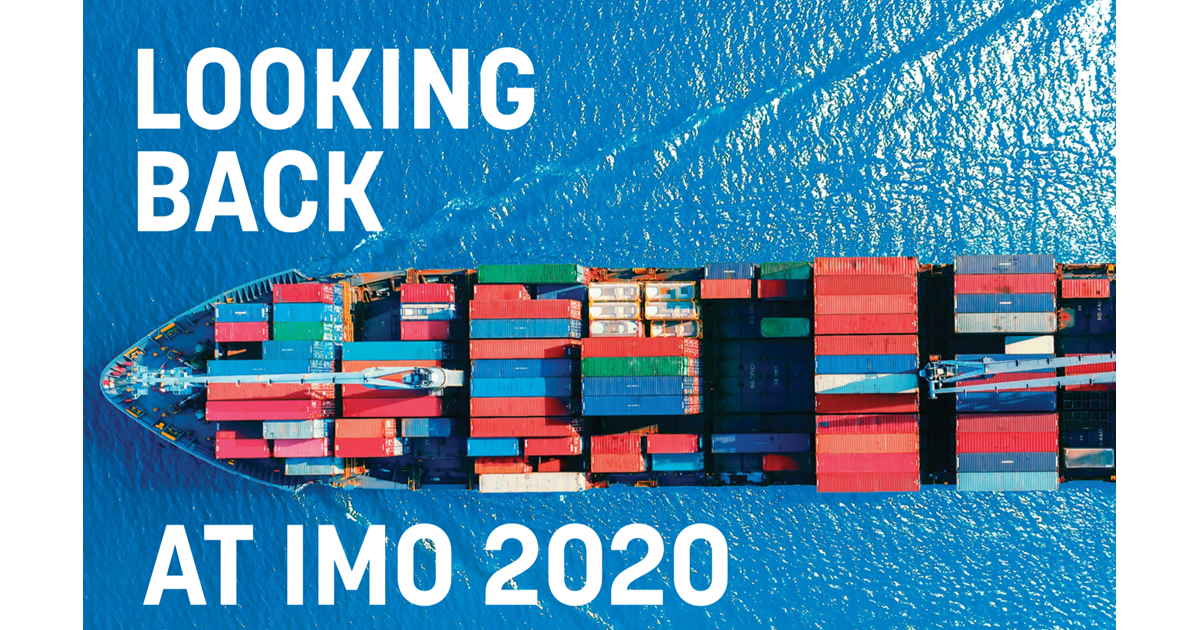By Keith Reid
Do you remember IMO 2020? The International Maritime Organization’s 2020 sulfur reduction rule? If it slipped your mind, you’re not alone. What was once considered a potentially earth-shaking issue for the entire fuels market has since been easily eclipsed by other factors.
IMO 2020 was supposed to have a significant impact on distillate prices and availability and be generally disruptive to refined fuels in general. In 2012, the International Maritime Organization (IMO) lowered the maximum sulfur content in marine fuels to approximately 35,000 ppm, with the intent to get sulfur content down to 5,000 ppm between 2020 and 2025. While the regulation was not universal, the IMO is made up of nearly 200 member countries that represent the most active shipping markets and ports throughout the world.
Maritime bunker fuel oil is a distillate comparable to diesel, heating oil or jet fuel. There has been a steady process of reducing sulfur levels in diesel, heating oil and gasoline, yet certain markets, such as maritime and aviation, had been able to absorb the remaining high-sulfur fuels. This made high-sulfur fuels cost-effective while simultaneously reducing strain on the refining sector and making sour crude more viable. IMO 2020 impacts this balance and was seen as potentially creating significant disruptions to refining and shipping and ultimately increasing the price of most refined fuels and the products that are shipped using this fuel. It was also seen as potentially disrupting global supply chain logistics.
The Fuels Institute commissioned a literature review on the subject in 2019, titled “IMO 2020,” that reviewed over 30 reports, blogs, columns, presentations, email updates and other literature covering the projected impact. The primary theme was uncertainty. Both the maritime and refining industries had several ways in which they could react to the challenge, the specifics of which could potentially lead to varying degrees of impact on fuel markets.
The report noted that many media sources were indicating a virtual apocalypse from the switch to low-sulfur bunker fuels. It cited such projections as “one of the most disruptive changes to ever affect the refining and shipping industries—global impacts totaling in excess of $1 trillion over 5 years” and “consumers could be hit by $240 billion by 2020.” These projections not only included the direct impact on the fuel product but also the carryover impact on the supply chain.
Some combination of the following was seen as meeting the challenge:
- Shipping companies switching to lower-sulfur fuel. The cost of the fuel would be higher but there would be no significant capital outlays for the shippers. The refining industry would have to make major moves (which had not occurred at the time and would likely take at least four years to implement) to upgrade refineries to “full conversion” capabilities where high-sulfur fuel could be desulfured. This approach is capital intensive to the refining sector.
- Adding scrubber technology to ships. Technology exists to remove the sulfur at the vessel itself, in the same way power plants can remove high-sulfur content from coal or oil. This would require a significant capital outlay on the part of shippers, yet the fuel cost would be lower and there would also likely be more international availability in less-developed regions.
Other possibilities, such as changing over to marine gas oil, which is typically very expensive, or liquefied natural gas (LNG), which requires new vessel construction or significant modifications, were considered marginal alternatives.
How it played out
Going on three years since the implementation date, what exactly has happened? Detailed, authoritative data is hard to come by, but according to an Offshore Energy article by Jasmina Ovcina Mandra published in September 2022, IMO 2020 has successfully dropped sulfur oxide emissions by 77%.
While the article does not provide nuance on the extent to which compliance or shipping disruptions from COVID-19 created the 77% drop, other data suggest that very low sulfur fuel oil (VLSFO) was the primary route initially taken by shipping companies. S&P Global Commodity Insights from March 2021 indicated that about 78% of the fuels tested globally met the IMO 2020 sulfur standard.
There was some movement to LNG and marine oil gas and scrubbers. The ROI for scrubber adoption hinges on the price differential between the low- and high-sulfur fuels. Scrubbers need a differential of about $100 per metric ton of bunker fuel to provide a solid ROI, according to longtime maritime fuels journalist and editor Sam Chambers, writing in Splash247.
During the COVID-19 disruptions, Ship & Bunker data showed a differential drop to $45 per ton at the lowest point. Since the Ukraine war, VLSFO peaked at over $1,000 with differentials reaching over $500 according to Chambers. In February 2022 the differential had dropped to $160 per ton.
Pandemic and Ukraine War Disruptions
The literature review concluded that the price impacts to gasoline and diesel would range from 25 cents to 75 cents per gallon and would likely be limited to a window of two to three years. That may or may not have been the case. The apocalyptic price predictions largely materialized, though IMO 2020 was virtually unacknowledged in the market analysis. The double whammy of the pandemic and the Russia-Ukraine War that the fuels world has been reeling under since 2019 more than muddied the waters.
“IMO 2020 definitely was a big point of the supply and demand conversation around two to three years ago, but how things change once a pandemic floors a global economic engine,” said Joe Butler, business unit leader at Pilot Company and a Fuels Institute board member. “I don’t think I’ve heard anything about how the IMO sulfur specs are contributing to fundamental global shortages in a while.”
He noted that the current discussion is focused on a range of other issues, including the supply and demand rebalance from lingering COVID impacts, ESG impacts to capital expenditure in traditional hydrocarbon, a supply rebalance with the war, lingering demand impacts from Chinese COVID issues, the current economic slowdown in Europe, potential recession impacts domestically and conversion of units to renewable diesel/sustainable aviation fuel to meet anticipated demand.
That doesn’t mean it didn’t have an impact or change the distillate production stream going forward.
“IMO 2020 is definitely competing with desulfurization capacity. It’s just that it seems like it is being drowned out by the cacophony of other louder issues,” Butler said.
Stephen Jones, an oil market strategist and a board member for the Fuels Institute, concurred. “Although hard to substantiate, and perhaps being overshadowed by larger factors, I do think the sulfur limit is a contributing factor among many that add up to some of the price strength and general market tightness.”
VGO Impact
Troy Vincent, senior market analyst at DTN, has extensive experience analyzing maritime fuels. He noted that vacuum gas oil (VGO) is one area where IMO 2020 has made a significant impact.
“Many ships switched over to this VLSFO, and ultimately what that does is it cuts a good portion of refinery inputs for distillate output, namely VGO,” Vincent said. “It put that in the bunker fuel stream. So you went from taking that VGO and splitting it into diesel molecules that would be used for on-road diesel and diverting that in a post-IMO 2020 world into producing VLSFO bunker fuel. As a result, middle distillate refinery yields have dropped as VGO gets utilized for bunker fuel.”
Vincent sees the VGO impact as an indefinite component of the market that will push prices higher, and IMO 2020 as a market driver, but not one that will right-size the market and keep prices elevated forever. That is especially the case if the global economy continues to weaken.
Vincent noted another impact on the diesel market that ties in IMO 2020 and other desulfurization efforts. “The desulfurization process at the refinery level is very energy intensive,” said Vincent. “With natural gas prices at record highs all around the world, this incentivized running lighter, sweeter crudes with lower diesel yields. That’s one reason that crack spreads for diesel have been as high as they are.”
The disruptions of the past several years seem to have masked, and perhaps eased, the anticipated impact of IMO 2020. Desulfurization is now baked into the market. According to Vincent, it’s most likely to be a more notable factor when disruptions occur moving forward.
“When something does go wrong from a supply perspective, IMO 2020 is always going to be pulling that VGO towards the [bunker] fuel market,” he said. “Anytime you have a supply shortage or outage or a refinery problem, it’s just going to exacerbate things. This did change the game. At the time it wasn’t all that important because of COVID and everything else, but as we look forward—particularly in the Atlantic Basin and Europe—this is going to continue to keep that part of the market tighter than you would otherwise have expected.”









